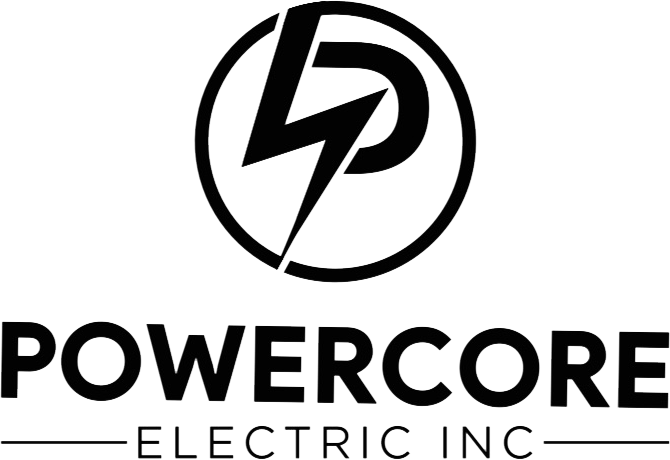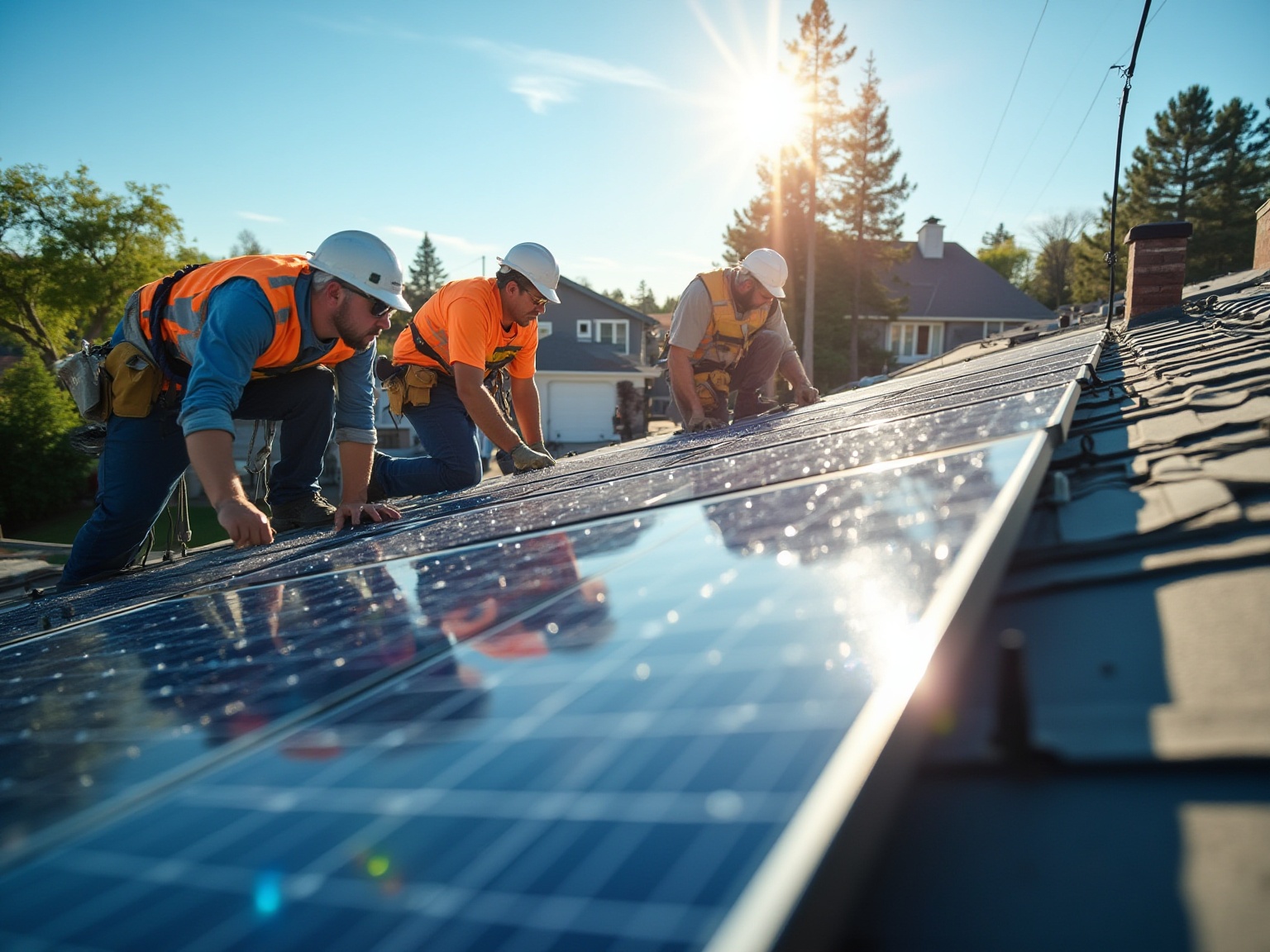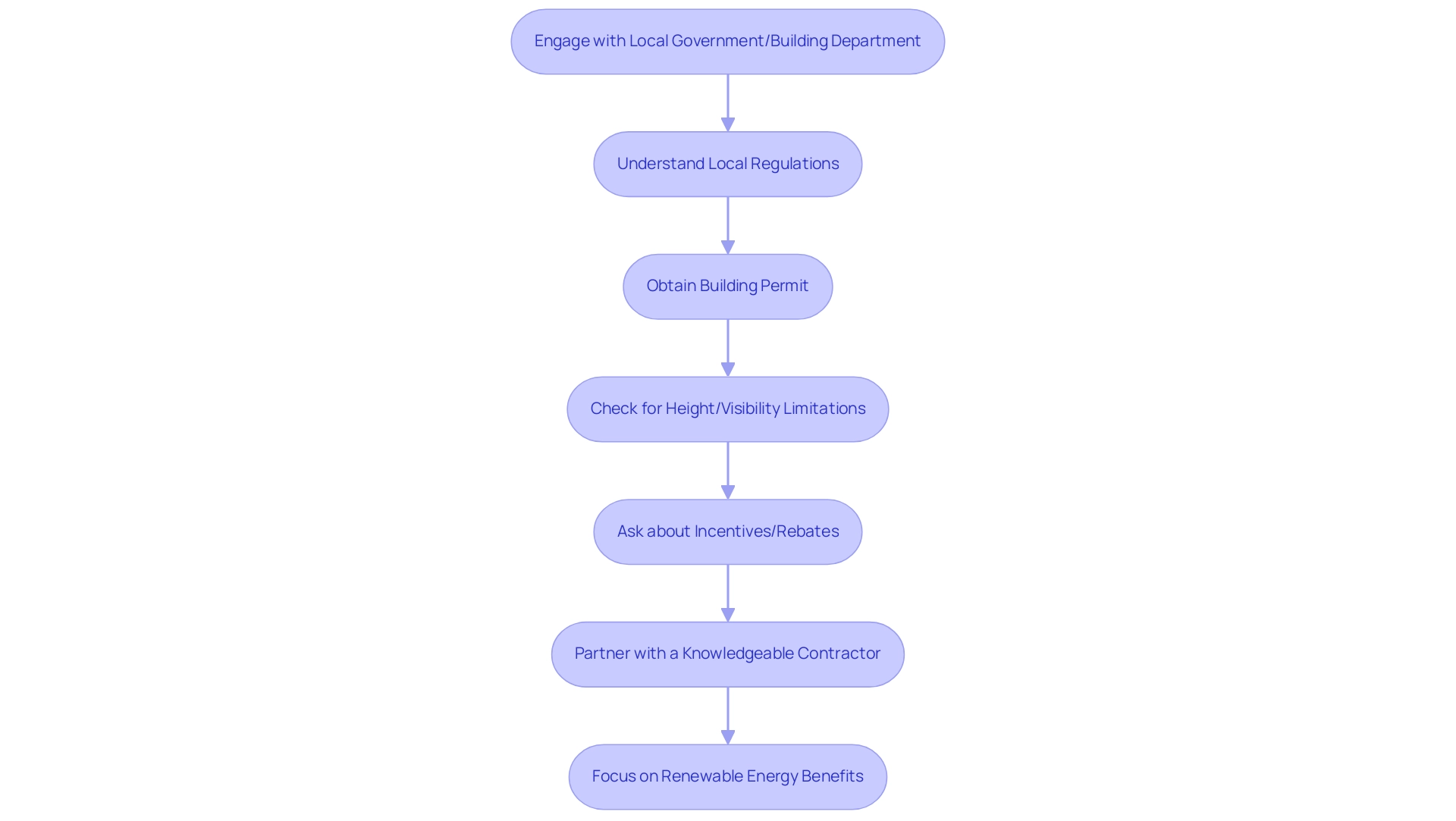Overview
To install rooftop solar panels, homeowners should follow a systematic approach that includes preparing the roof, gathering necessary tools, and adhering to local regulations while considering budget and financing options. The article outlines a comprehensive step-by-step guide that emphasizes the importance of roof inspection, proper installation techniques, and the potential financial benefits, ensuring that readers are well-equipped to navigate the solar panel installation process effectively.
Introduction
As homeowners increasingly look to harness the power of renewable energy, solar panel installation has emerged as a popular and sustainable choice. However, before taking the plunge, it’s essential to navigate the various steps involved in preparing for and executing a successful solar project. From ensuring your roof is primed for solar panels to understanding local regulations and budgeting for the costs, each aspect plays a critical role in maximizing the benefits of solar energy.
This guide will walk through the essential preparations, installation processes, and considerations for selecting the right provider, empowering homeowners to make informed decisions that not only enhance their energy efficiency but also contribute to a greener future.
Preparing Your Roof for Solar Panel Installation
Before exploring the thrilling realm of energy from the sun, it’s crucial to give your roof top solar panel a thorough inspection. Start by looking for any signs of damage or wear—things like missing shingles or leaks can pose significant issues down the road. If your roof is older than 20 years, it’s a good idea to have a professional take a closer look.
They can evaluate if your roof has the capacity to bear the load of roof top solar panels as renewable energy structures. Additionally, ensure to clear away any debris and trim back overhanging branches; this will help prevent shading, which can hinder the efficiency of your energy setup. In fact, the U.S. media production ratio for photovoltaic panels is 1.3, meaning that a well-prepared roof top solar panel can significantly enhance your renewable power efficiency.
Keep in mind the local weather conditions as well—it’s best to avoid installation during extreme temperatures or storms to ensure everyone’s safety and the efficiency of the process. Additionally, evaluate the top battery choices for your storage requirements, such as:
- Lithium-ion batteries, which provide high efficiency and longevity
- Lead-acid batteries, which are more economical but may demand more upkeep
With the cost of roof top solar panels having decreased by 37% over the past decade, now is an excellent moment to consider renewable power for your home.
However, it’s important to be aware that the average cost for a residential photovoltaic system ranges from $10,290 to $20,580. While this can pose a barrier to adoption, government incentives like tax credits can help ease the financial burden. By following these steps, you’ll not only ensure your roof is ready but also maximize the potential of your energy system, paving the way for a more sustainable and eco-friendly future!
Step-by-Step Guide to Installing Rooftop Solar Panels
- Gather Your Tools and Materials: Before beginning your installation, it’s essential to collect all necessary tools. You’ll need a drill, wrenches, and safety gear to protect yourself during the process. Don’t forget to buy high-quality photovoltaic modules, mounting hardware, and inverters from a reliable supplier. As highlighted in the recent Reviews report on the top photovoltaic brands for 2024, choosing dependable materials is crucial to guaranteeing your system’s efficiency and longevity. Look for systems with high efficiency ratings and inverters with robust warranties to maximize your investment.
- Mounting the Solar Panels: Start by installing the mounting brackets on your roof, carefully following the manufacturer’s detailed instructions. Secure these brackets firmly to the rafters for stability and safety. A robust base improves your return on investment and minimizes installation risks, ultimately assisting you in maximizing your capture of sunlight.
- Attach the Modules: With your brackets in place, it’s time to lift the solar modules onto your roof. Carefully attach the roof top solar panels to the mounting brackets, ensuring the roof top solar panel alignment is correct to optimize energy capture and efficiency. Consider the angle and direction of the surfaces to maximize sunlight exposure throughout the day.
- Wiring the Panels: After securing the panels, connect them using the provided wiring. Take your time to ensure that each connection is secure and weatherproof to prevent future issues. This step is vital for the reliability of your energy system and contributes to its longevity.
- Install the Inverter: Next, mount the inverter in a shaded area, typically on an exterior wall. This component is essential as it transforms sunlight into usable electricity for your home. Link it to the photovoltaic panels and incorporate it with your home’s electrical system, ensuring you’re prepared for effective power consumption. Choose an inverter with a good efficiency rating to ensure optimal performance.
- Final Checks: Before powering up your system, conduct a thorough inspection of all connections, making sure everything is securely fastened. It’s better to double-check now than to encounter issues later! Once you’re satisfied, you can activate your new photovoltaic system and start enjoying the advantages of renewable resources.
- Routine Upkeep: To guarantee the durability and effectiveness of your photovoltaic system, it’s essential to carry out routine upkeep. This includes cleaning the surfaces to remove dust and debris, checking for any signs of wear or damage, and ensuring that all connections remain secure. Routine upkeep can greatly improve the effectiveness and longevity of your photovoltaic system.
As we adopt this technology, it’s essential to acknowledge the wider effects: not only does setting up these panels lower utility expenses and improve independence, but it also fosters sustainability and aids in job creation. According to the U.S. Department of Energy, the renewable energy sector has created thousands of jobs in recent years, and by participating in this clean energy transition, you’re not just investing in your home; you’re also supporting initiatives that ensure equitable access to renewable power for communities everywhere.
Navigating Local Regulations and Permits for Solar Installation
Before starting your energy setup project, it’s crucial to engage with your local government or building department to gain a clear understanding of the regulations that pertain to your area, especially in Long Beach. Understanding these regulations is crucial, as they can vary significantly across California. Generally, you’ll need a building permit, and there may be specific guidelines concerning where you can place your panels and how they should be designed.
For example, Long Beach may impose limitations on the height or visibility of renewable energy setups. Don’t forget to ask about any available incentives or rebates, such as the California Initiative, that could help ease the financial burden of your energy investment. As Usman Noor mentions, ‘Choosing 8MSolar means collaborating with a firm committed to streamlining the energy setup process while providing high-quality, compliant energy solutions.’
Partnering with a contractor who is well-versed in local regulations can make this process smoother and ensure you’re compliant with all necessary rules. By staying informed about the services provided by nearby energy firms, such as setup and maintenance choices, and equipped with understanding of the local regulations, you can concentrate on enjoying the advantages of renewable energy while being assured that everything is managed!
Budgeting and Financing Your Rooftop Solar Project
To kick off your energy journey, it’s essential to start by estimating the total cost of your project. This encompasses everything from equipment and setup to necessary permits. A great first step is to dive into the various financing options available.
Whether you’re considering energy loans, leases, or Power Purchase Agreements (PPAs), there’s something that can fit your financial situation. Don’t forget to factor in state and federal tax credits—this incentive allows you to apply 30% of your energy system and equipment expenses toward your federal tax bill, significantly lightening your financial load.
Additionally, understanding the costs associated with a Level 2 home charger is crucial. These chargers typically range from $400 to $1,200 for the unit alone, not including installation, which can add another $300 to $1,000 depending on your home’s electrical system. It’s significant that the leading three community renewable state markets accounted for 73% of total interconnected capacity in H1 2024, indicating a strong market for this form of power.
For Long Beach tenants, utilizing renewable power solutions like roof top solar panels can provide access to environmentally friendly alternatives that can significantly decrease your reliance on conventional electricity. When formulating your budget, remember potential maintenance expenses and the savings you can anticipate over time. In fact, investing in roof top solar panels can lead to remarkable savings on electricity bills, with estimates ranging from $31,000 to $120,000 over 25 years, as highlighted in a case study on long-term savings from renewable sources.
This case study highlights that homeowners who transition to renewable energy by installing a roof top solar panel not only save significantly on their utility bills but also enhance their property value. Additionally, it’s beneficial to utilize online calculators to estimate your return on investment (ROI) based on your consumption and local utility rates. With module costs for the distributed generation segment decreasing by an average of 40% year-over-year, now is an excellent time to explore your options and maximize your investment in renewable power, especially if you’re looking to integrate EV charging solutions into your home.
Choosing the Right Solar Provider and Equipment
When it comes to finding the right solar provider for your home, a little research can go a long way. Start by reading reviews online and tapping into your network—ask friends, family, or neighbors for their recommendations. Look for companies like Powercore Electric, known for their local expertise in Northern and Southern California, ensuring they understand the unique energy needs of your community.
Many satisfied customers have praised Powercore for their exceptional service, with one homeowner stating, ‘Powercore made the process seamless, and their team was incredibly knowledgeable about our specific needs.’ Seek out providers who don’t just promise excellent service but also support it with thorough warranties, ensuring peace of mind for your investment.
Experience in residential setups is essential, so check how long they’ve been in the field and what types of projects they’ve completed. Powercore’s dedication to superior quality craftsmanship signifies they concentrate on meticulous procedures that meet the highest standards of safety and efficiency. Compared to competitors, Powercore stands out with their personalized service and dedication to sustainability, making them a top choice for eco-conscious homeowners.
It’s crucial to ensure that the equipment meets industry standards and comes from reputable manufacturers. Don’t hesitate to ask potential providers about their installation processes, timelines, and what kind of support you can expect after installation. Remember, it’s always smart to gather multiple quotes.
This way, you can compare costs and services, ensuring you find a solution that suits your budget while meeting your power requirements.
In 2023, the primary advantages of roof top solar panel systems for residential use include substantial savings on utility bills, enhanced home value, and a decreased carbon footprint, making them an attractive choice for eco-conscious homeowners. Additionally, with around 85% of installers using NREL’s SolarAPP+ permitting software reporting that it makes permitting significantly easier, you can feel confident that the process is getting smoother. Furthermore, a recent case study on residential solar power consumption forecasts a substantial increase in non-marketed solar photovoltaic consumption in the U.S. from 2022 to 2050, highlighting the growing relevance and potential of solar energy in the residential sector.
With a bit of diligence, you’ll be well on your way to harnessing the power of the sun for your home with a provider that prioritizes your satisfaction and sustainability. Contact Powercore Electric today for your free, personalized estimate and take the first step towards a greener future.
Conclusion
Taking the leap into solar energy is an empowering decision that not only benefits the environment but also enhances your home’s energy efficiency and value. By ensuring your roof is ready for installation, you set the foundation for a successful solar project. A thorough inspection and preparation can significantly increase the efficiency of your solar panels, allowing you to harness the sun’s power effectively.
Navigating the installation process may seem daunting, but following a structured step-by-step guide makes it manageable. From gathering tools to ensuring proper wiring and maintenance, each step is vital in creating a reliable and efficient solar energy system. Furthermore, understanding local regulations and available incentives can alleviate financial concerns, making it easier to transition to renewable energy.
Choosing the right provider and equipment is equally important in maximizing your investment. By conducting diligent research and comparing options, homeowners can find a trusted partner who offers quality service and products tailored to their specific needs. The long-term savings on energy bills, increased property value, and contributions to a sustainable future are compelling reasons to embrace solar energy.
In conclusion, the journey toward solar energy is filled with opportunities for homeowners to make informed choices that lead to a greener, more sustainable lifestyle. By preparing adequately, understanding the installation process, navigating local regulations, and selecting the right provider, anyone can enjoy the myriad benefits of solar power. Now is the perfect time to take action and invest in a brighter, cleaner future powered by the sun.



